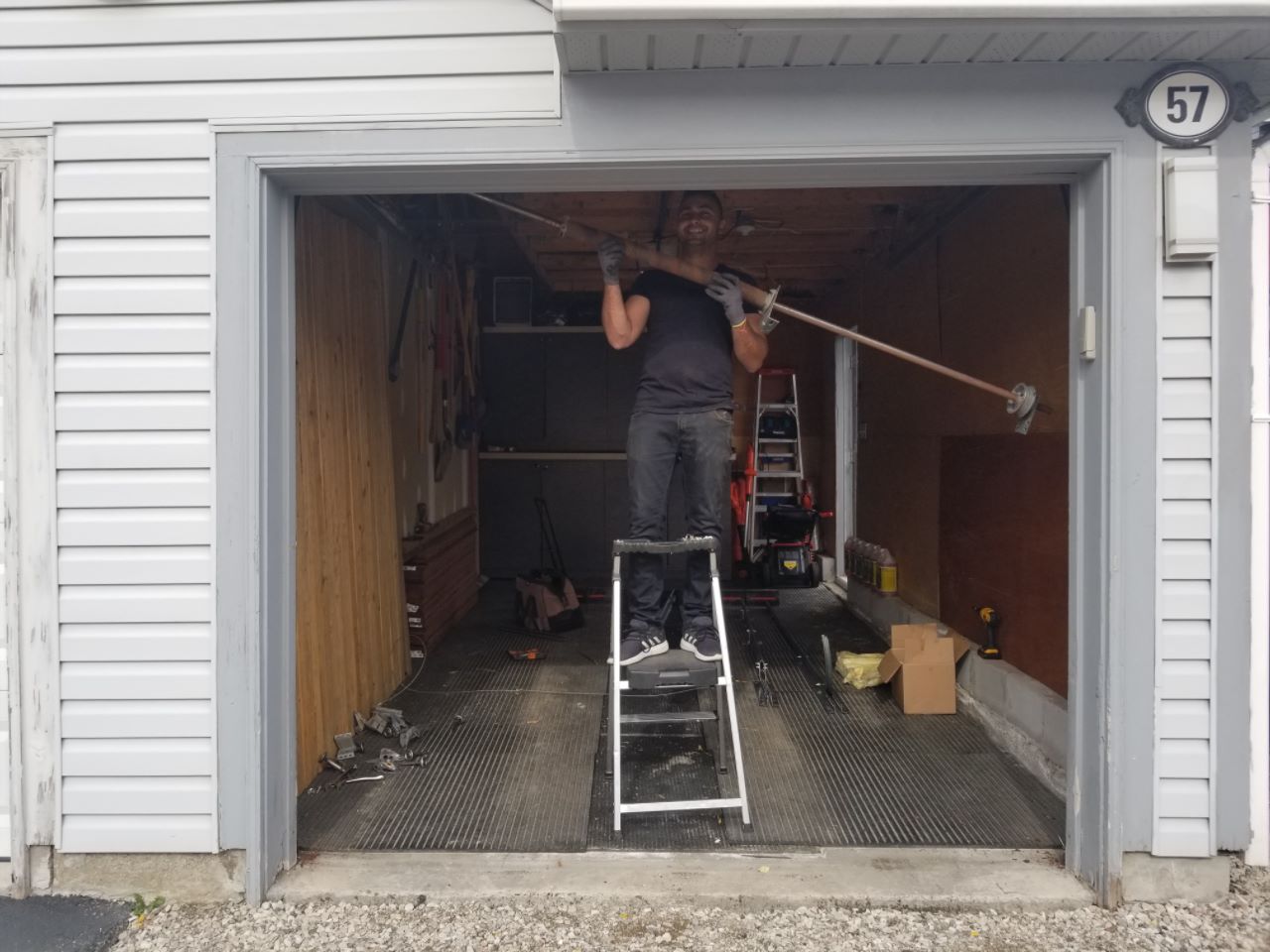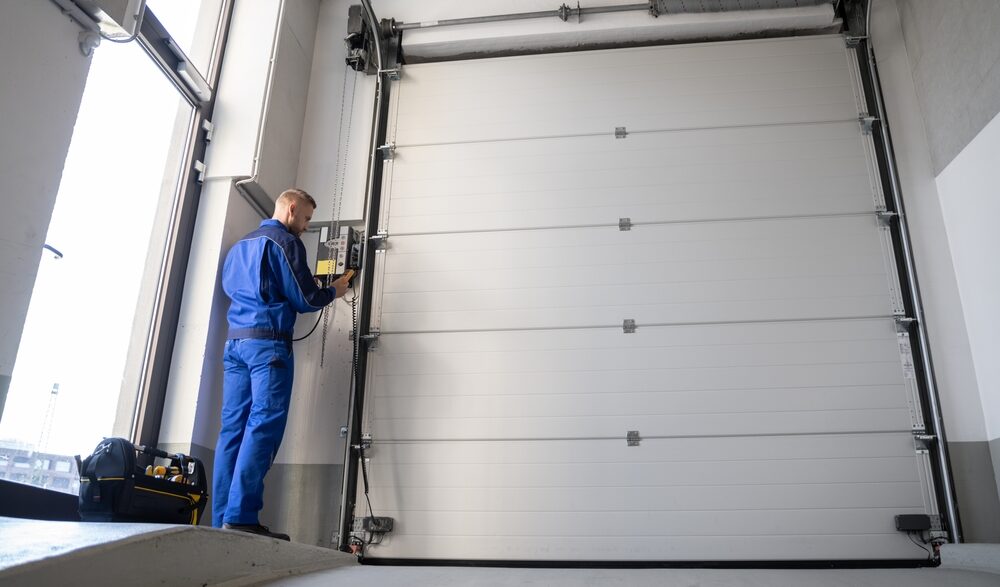Typical Issues and Solutions for Homeowners With Garage Doors
As a homeowner, you might face several typical garage door problems that can interrupt your day-to-day regimen. From malfunctioning openers to loud procedure, these troubles can be frustrating. Fortunately, numerous services are simple and can conserve you time and cash. Nevertheless, some concerns might require expert assistance. Let's explore the most frequent garage door problems and just how you can tackle them properly.
Malfunctioning Garage Door Openers
When your garage door opener begins breaking down, it can be aggravating, especially if you rely upon it daily. You could locate that it does not reply to your remote or the door opens up and shuts unpredictably. First, check the batteries in your remote; weak batteries can create periodic issues. If that's not the problem, inspect the opener's source of power. Confirm it's plugged in and the circuit breaker hasn't stumbled. Occasionally, a stuck or unclean antenna can hinder signal reception, so offer it a fast clean.
If you still experience concerns, try to find any indicators of wear on the gears or electric motor. A malfunctioning opener might require lubrication and even a substitute part. Do not be reluctant to consult your user guidebook for troubleshooting pointers particular to your version, or think about calling a professional if the trouble continues. Taking these actions can help recover your garage door's functionality in a snap.
Misaligned Garage Door Tracks
If your garage door isn't opening or closing efficiently, misaligned tracks may be the offender. Usual reasons include damage or accidental bumps that disrupt the alignment. Taking care of these track concerns can restore your door's feature and maintain it running securely.
Reasons of Misalignment
Misalignment of garage door tracks can take place for several reasons, frequently resulting in discouraging operational issues. One usual reason is regular deterioration; with time, screws and bolts can loosen, creating the tracks to move. If your garage door obtains bumped or struck, that influence can misalign the tracks. Additionally, changes in temperature and humidity can create the metal tracks to broaden or contract, causing imbalance. Dirt and debris buildup can also obstruct the tracks, pushing them misplaced. Ultimately, inappropriate setup can result in consistent alignment problems. Recognizing these reasons can aid you understand why your garage door isn't functioning efficiently.
Dealing With Track Concerns
Dealing with track issues with misaligned garage doors needs a cautious technique to assure smooth operation. Check the tracks for bends or debris that may block movement. Make use of a level to inspect if the tracks are directly; otherwise, carefully touch them back into positioning with a rubber mallet. Next off, verify the brackets holding the tracks are limited; loosened screws can create imbalance. If the tracks are substantially damaged, take into consideration changing them. Once aligned, lubricate the tracks with a silicone-based spray to lower friction. Finally, examination the garage door's operation to validate it opens and closes smoothly. Routine maintenance will certainly help prevent future track problems and keep your garage door working correctly.
Broken Springs
When your garage door unexpectedly rejects to open or close, it's usually because of damaged springtimes. These springs bear the weight of the door, making it simple for you to lift or reduce it. If they break, you'll observe that your door feels heavy or won't move in all.
To verify the issue, aesthetically examine the springs for voids or breaks. If you suspect they're damaged, do not attempt to fix them yourself, as they're under high tension and can trigger injury. Instead, call a professional who can safely replace the springtimes.
Routine maintenance can aid prevent spring failing, so keep an eye on their problem and lube them regularly. If you're experiencing frequent spring troubles, think about updating to higher-quality springs that can endure more deterioration. This proactive approach can conserve you time and cash in the lengthy run, guaranteeing your garage door operates smoothly.
Noisy Garage Doors
After dealing with problems like busted springtimes, you may observe another common trouble: loud garage doors. If your garage door squeaks, rattles, or groans, it can be quite irritating, particularly if it's disrupting your tranquility. The sound frequently comes from damaged rollers, loose equipment, or absence of lubrication.
Begin by examining the rollers and hinges. If they're unclean or damaged, cleaning up or changing them can significantly decrease noise. Next off, look for loosened screws or screws; tightening them can remove rattling noises. he has a good point Don't fail to remember to lubricate the moving components with a silicone-based spray or garage door lubricating substance. This will help lessen friction and sound.
If your door still sounds like a dinosaur, take into consideration speaking with a specialist. Routine maintenance can avoid noisy garage doors and extend their life-span, guaranteeing you enjoy a quieter, smoother procedure.
Garage Door Remote Issues
Numerous homeowners experience frustration with garage door remote concerns at some factor. Change them and see if that solves the problem. Consult your garage door opener handbook for specific directions. garage doors nanaimo.
Often, disturbance from various other electronics can influence your remote. Check for any type of nearby tools that could be creating a signal disruption. If that does not assist, evaluate the remote for physical damage, like cracks or busted switches.
One more typical problem is range; you may simply be too much from the garage door. Make sure you're within array when trying to operate it. If all else stops working, take into consideration contacting a specialist for assistance. They can detect and take care of any type of hidden troubles with your garage door system.
Weather Condition Stripping Problems
If you discover drafts, water leaks, or boosted power bills, your garage door's weather condition stripping may be worn. Recognizing how to spot indicators of wear and understanding installation ideas can help you preserve a correct seal - garage doors nanaimo. When it's time for a replacement, you'll have lots of choices to choose from
Signs of Use
As you utilize your garage door gradually, the weather condition stripping can start to reveal signs of wear, which is necessary to address. Seek spaces or splits in the rubber or vinyl material; these can let in drafts, dust, and moisture. If you observe the stripping is breakable or tearing far from the door, it's time to do something about it. You might also locate that your garage door doesn't seal properly, leading to boosted power expenses or parasite issues. Regularly inspect the weather stripping to catch these problems early. If you see significant damages, changing the climate stripping can help preserve your garage's effectiveness and safeguard your personal belongings from the components. Don't disregard these signs-- act quickly!
Installment Tips
When you discover wear on your garage door's weather removing, dealing with the installation can make a considerable difference. Verify you have the appropriate type of weather condition removing for your garage door. By paying interest to these details, you'll improve your garage door's insulation and safeguard your home from the components.
Substitute Options
While you may have installed your garage door's weather stripping correctly, wear and tear can still lead to problems that demand substitute. Step your door's measurements properly to guarantee an appropriate fit, and pick self-adhesive strips for very easy setup. Routinely checking and changing weather removing not just boosts your garage's energy efficiency however likewise secures it from damage.
Sensor Breakdowns

Beginning by inspecting the sensor placement. Make sure both sensing units deal with each other and are degree.
If the sensing units appear intact however the door still will not shut, it may look at this site be time to replace them. With a little troubleshooting, you can normally deal with sensing unit concerns and obtain your garage door functioning efficiently More Help once again.
Frequently Asked Concerns
Exactly how Often Should I Keep My Garage Door System?
You need to maintain your garage door system at the very least two times a year. Routine checks for wear, lubrication of moving parts, and changing the tracks can keep it working efficiently and expand its life-span substantially.
Can I Install a Garage Door Myself?
Yes, you can mount a garage door on your own, yet it needs mindful planning and the right tools. Ensure you follow the producer's directions very closely and think about safety and security precautions to prevent accidents during setup.
What Is the Typical Lifespan of a Garage Door?
The standard life-span of a garage door is normally 15 to 30 years, relying on products and maintenance. If you take care of it well, you can optimize its durability and enjoy reliable efficiency.

Exactly how Do I Pick the Right Garage Door?
When you pick the right garage door, think about products, design, and insulation. Think of your home's style, spending plan, and upkeep needs. Don't fail to remember to examine neighborhood guidelines and energy efficiency scores for suitable efficiency.
Are There Energy-Efficient Garage Door Options Available?
Yes, there are energy-efficient garage door options available. You can select protected doors, which help preserve your garage's temperature level, or look for models with a high R-value to enhance energy effectiveness and minimize energy prices.